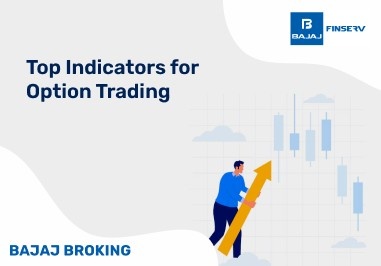Stock market trading has become accessible for every interested individual. Unlike the traditional trading method, modern trading can be done just with a few clicks on the mobile. But is that all? Is stock market trading all about a stable internet connection and a mobile? No. It requires you to develop trading strategies, smartly. Let’s talk about one such trading strategy: Modern Portfolio Theory.
In a nutshell, modern portfolio theory talks about creating a diverse investment portfolio to maximise returns. You must understand the theory in and out for practical implementation, so let’s delve into the details.
Understanding Modern Portfolio Theory in Detail
Modern portfolio theory is a practical trading method that believes in selecting investments to maximise returns and lower risk levels. A simple rule behind this theory is that investments can be broadly categorised into two types: one with high risks and high returns and the second with low risks and low returns. To build an impressive portfolio, it is important to take a mixed approach to picking assets.
The theory was first published in a paper “Portfolio Selection” written by Harry Markowitz in 1952. The pioneer of the theory argued that investors can achieve maximum returns from their portfolio when they choose a mixed group of assets based on their risks and returns.
One rule of modern portfolio theory is that investments should not be viewed in isolation but should be evaluated in how they affect the overall performance of the portfolio.
Types of Modern Portfolio Theory
Advantages and Disadvantages of the Modern Portfolio Theory in Finance
Before applying any investing theory or strategy it is important to weigh both the pros and cons to ensure implication in a way that brings maximum returns. Let’s start by looking at the advantages of modern portfolio theory:
One of the most popular and reliable investment strategies is to build a diverse portfolio. Modern portfolio theory is based on the concept of diversification.
Modern portfolio theory believes in creating an efficient portfolio by carefully picking assets. As discussed before, under the theory investors are advised to not evaluate assets in isolation but rather in a way that brings stability to the overall investment portfolio.
Lastly, modern portfolio theory and risk management are mutually inclusive. It goes without saying that the stock market is a volatile space and a reliable way to mitigate through volatility is to choose investments of different kinds of assets belonging to different sectors. This reduces the impact of market volatility on the investment portfolio.
While there are many advantages, modern portfolio theory also has certain disadvantages as well:
The modern portfolio theory assesses an investment based on variance and not down risk which limits the approach. Simply put, under MPT two different portfolios may show the same variance levels but for different reasons. These reasons are not assessed.
Modern portfolio theory is simply based on mathematical calculations about the investment and it fails to take a comprehensive calculation by factoring in miscellaneous costs like brokerage, platform charges etc.
Another disadvantage of modern portfolio theory is that it talks about trading and investing only in a rational manner. In reality, while understanding trading psychology is essential, sometimes even experienced traders make emotional decisions.
Additional Read: Brokerage calculator
Modern Portfolio Theory Formula in Finance
Modern portfolio theory has become an integral part of finance. The theory was published in the Journal of Finance in 1952 as a paper written by Harry Markowitz. In finance, the theory is applied based on different assumptions:
An underlying assumption of modern portfolio theory is that when given a choice between an investment that is less risky with low return and high risk with high returns, the choice should be less risky.
As the name suggests, risk free rate of return is an investment that offers returns but has zero risk attached to it. This can be true only in an hypothetical situation where returns come without any risk.
Risk of a portfolio is an important part in finance study. The risk of a portfolio can be assessed by evaluating the risk of each asset and the correlation of each asset pair. Therefore, the general rule is that while selecting an asset, it is smart to select assets with little or no correlation with each other.
Another important aspect of modern portfolio theory in finance is that once the risk an investor is willing to take is identified, this can be used to create multiple other portfolios. Let’s assume a graph of standard deviation, now according to MPT, the standard deviation being on X axis and expected returns on Y axis will bring the portfolio frontier in a deformed C shape. Know that each point on this deformed C represents different levels of risks and returns of a portfolio.
Now, once there is a portfolio frontier in place, investors are focused only on the efficient frontier. Efficient frontier is the upper portion of the portfolio frontier as it represents the combinations of points that have the most promising possibilities of returns.
The capital allocation line is another important part under modern portfolio theory in finance that measures the risk to reward ratio for investors. Now, the slope on this line represents the additional return as the deviation increases. According to modern portfolio theory, the point on portfolio frontier that has the highest slope represents the highest possibility of returns.
Criticism of the Modern Portfolio Theory (MPT) in Finance
Modern portfolio theory, despite its wide popularity in finance, has always faced certain criticism. Amongst others, one of the most common criticisms of modern portfolio theory is that its approach is limited to variance.
Before moving ahead, know that variance is used to measure the variability from the average or mean. This is done by calculating the difference between each data set and the mean. However, one drawback of using variance is that it does not provide accuracy but rather the squared value of differences between numbers in each data set.
Now, when modern portfolio theory relies on variance it argues that two portfolios featuring the same level of variance and returns are equally desirable in the market. This is a narrow approach to viewing any investment that can be detrimental because one investment might show the same level of variance because of frequent small losses while the other investment shows the same variance because of rare but huge losses.
This impacts the decision of investors negatively as it makes evaluating the overall portfolio performance tough.
Additionally, the lack of considering factors other than mathematical calculations presents false figures on the graph.
How to Use Modern Portfolio Theory in Finance
Modern portfolio theory is widely applied in the field of finance especially when it comes to assessing risk to reward factors of any investment.
To use modern portfolio theory in finance, a general rule that is followed by experts is to evaluate every investment with a perspective of return and risk ratio. Any investment that comes with high returns will have high risk and the general assumption is that investors are likely to choose investments that has low risk and low returns.
Limitations of Modern Portfolio Theory
Modern portfolio theory comes with certain limitations, as well that must be taken into consideration before applying it practically.
Firstly, the theory speaks about a rational method of trading and investing that is not practical. Whether it is a beginner or an expert, it is common for them to indulge in some degree of emotional trading that impacts their portfolio. While it is important to reduce emotional decisions, it can not be eliminated completely while preparing a portfolio graph.
Additionally, the reliance on variance also limits the theory’s approach. According to the theory, any set of data showing the same level of variance will have the same level of appeal in the market, as well. However, it fails to include factors that result in the same level of variance.
Lastly, know that a portfolio is not limited to assets rather it includes the broking cost, platform charges, maintenance fees etc. Modern portfolio theory does not consider any of these factors in its portfolio assessment.
Conclusion
The modern portfolio theory is popular in the world of finance and is widely used by investors and traders, as well. The theory simply speaks about building a diverse portfolio that will help in mitigating market volatility and risks. While there have been certain criticisms of the theory, a new theory known as the Post-modern portfolio theory was developed to fill the loopholes. The post-modern portfolio theory argues that variance can not be taken as the sole measurement method for all kinds of investment portfolios. Clubbed, these two theories are significant for those interested in studying the market.
As a beginner in the stock market, you might find these theories daunting. So, take the first step of choosing a reliable broking platform to open a demat and trading account.
Do you have a trading account app or demat account app?
You can open an account with Bajaj Broking in minutes.
Download the Bajaj Broking app now from Play Store or App Store.
Disclaimer: Investments in the securities market are subject to market risk, read all related documents carefully before investing.
This content is for educational purposes only. Securities quoted are exemplary and not recommendatory.
For All Disclaimers Click Here: https://bit.ly/3Tcsfuc













